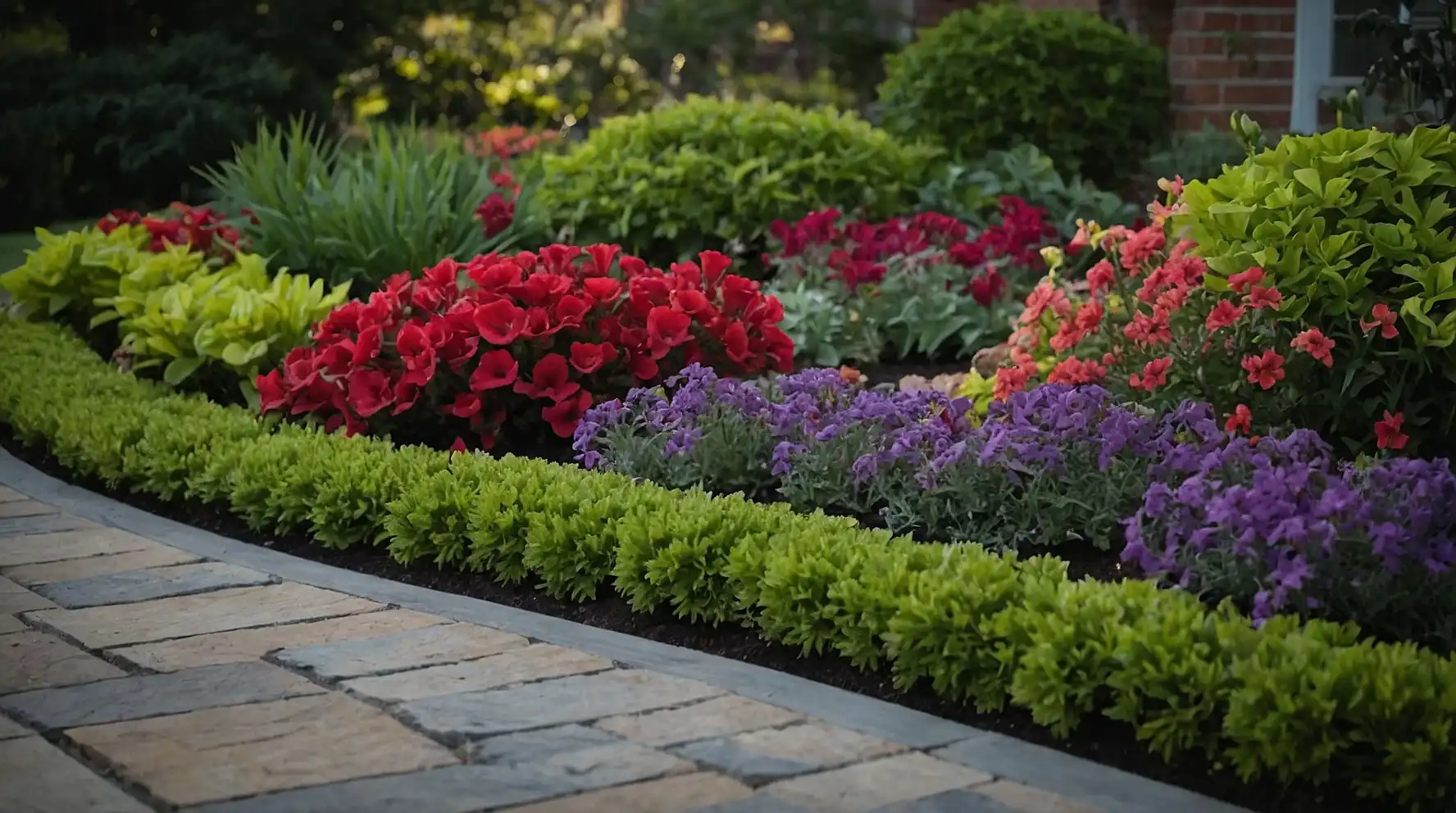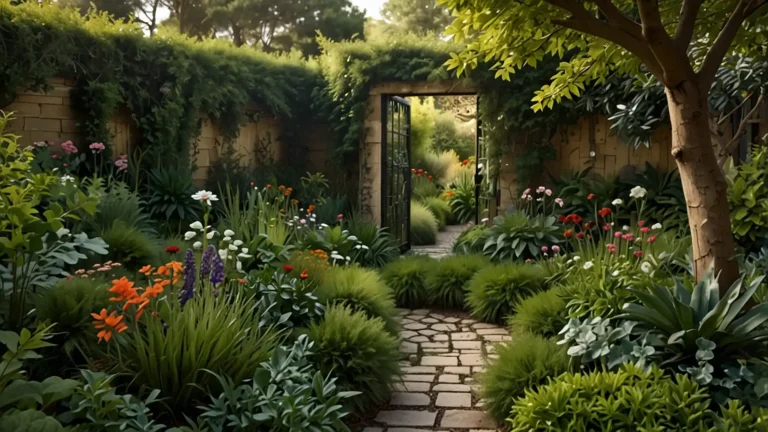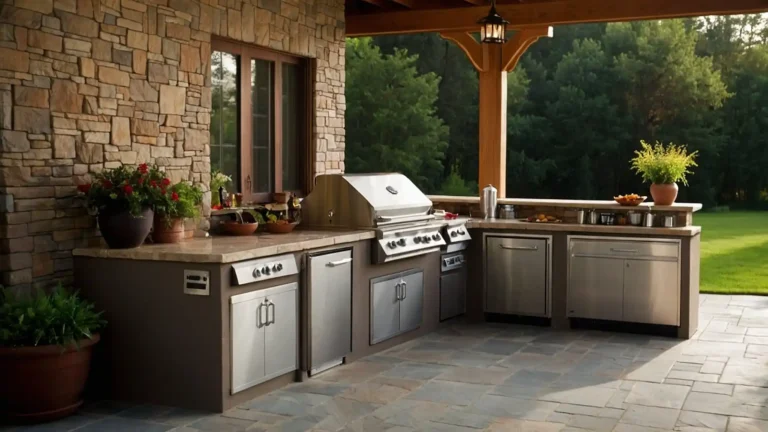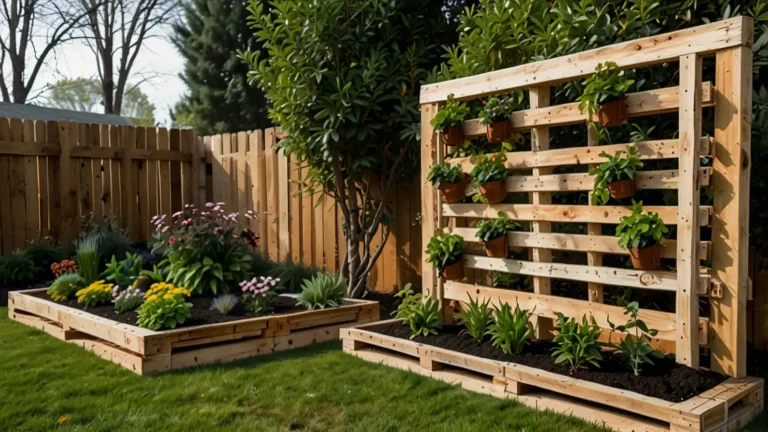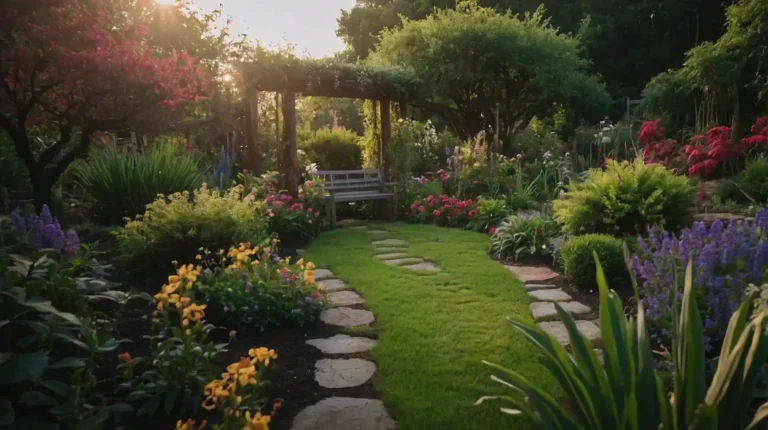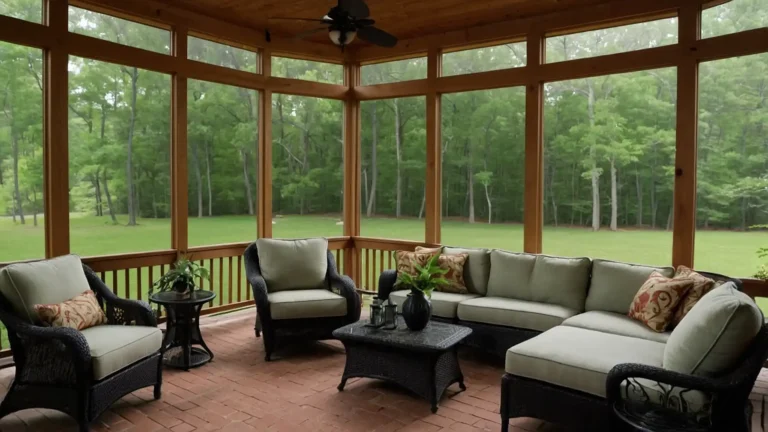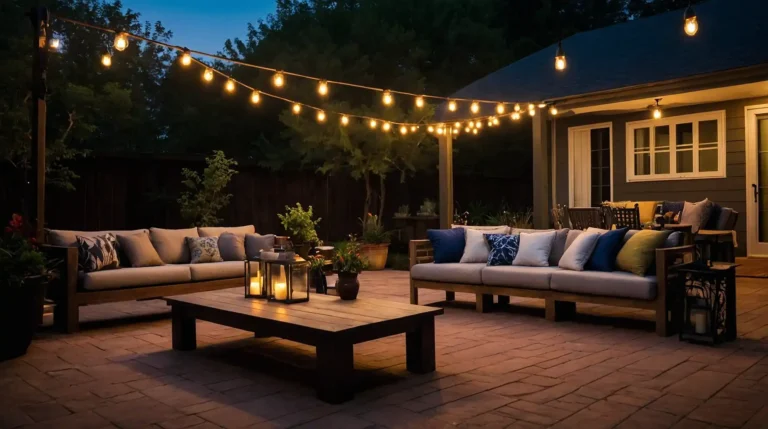27 Front Flower Bed Ideas
Your front flower beds create the first impression visitors have of your home.
These welcoming displays showcase your gardening style while boosting curb appeal significantly.
Smart design choices ensure year-round beauty with minimal maintenance requirements.
You can achieve stunning results regardless of your experience level or budget constraints.
From cottage charm to modern elegance, countless options suit every architectural style.
These 27 inspiring ideas will help you create front yard flower beds that neighbors admire.
1: Cottage Garden Charm
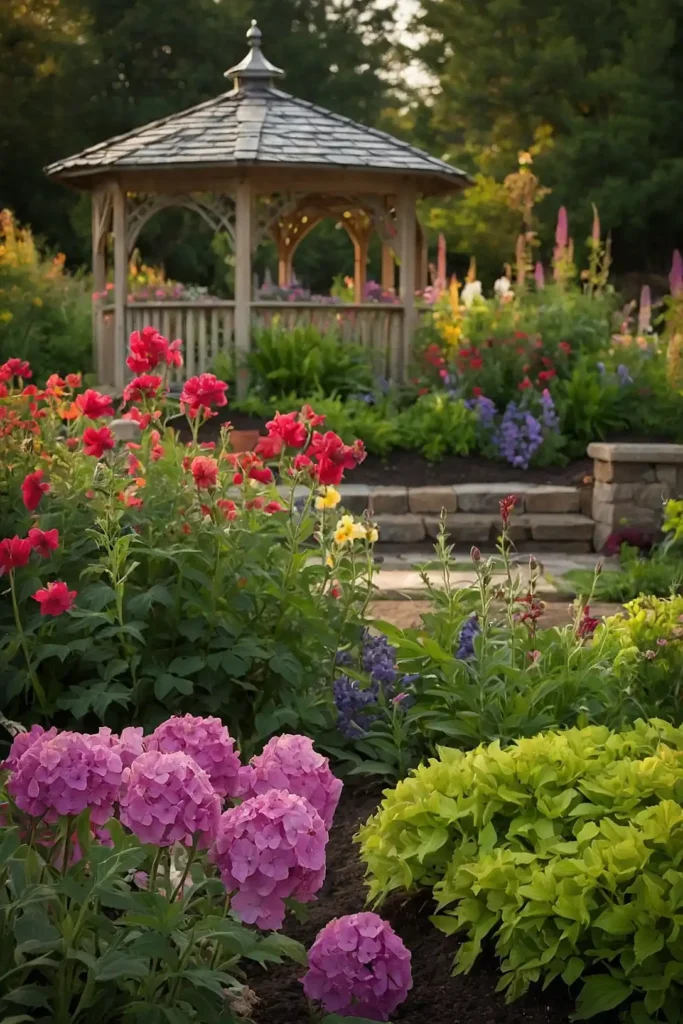
Create romantic, overflowing beds filled with traditional cottage plants. You’ll love mixing roses, hollyhocks, and delphinium for authentic English garden appeal.
Allow plants to self-seed naturally for effortless, informal arrangements. This relaxed approach creates charming, lived-in garden character.
Include picket fencing or rustic edging materials. Sweet peas and climbing roses add vertical interest to cottage-style displays.
2: Modern Minimalist Beds
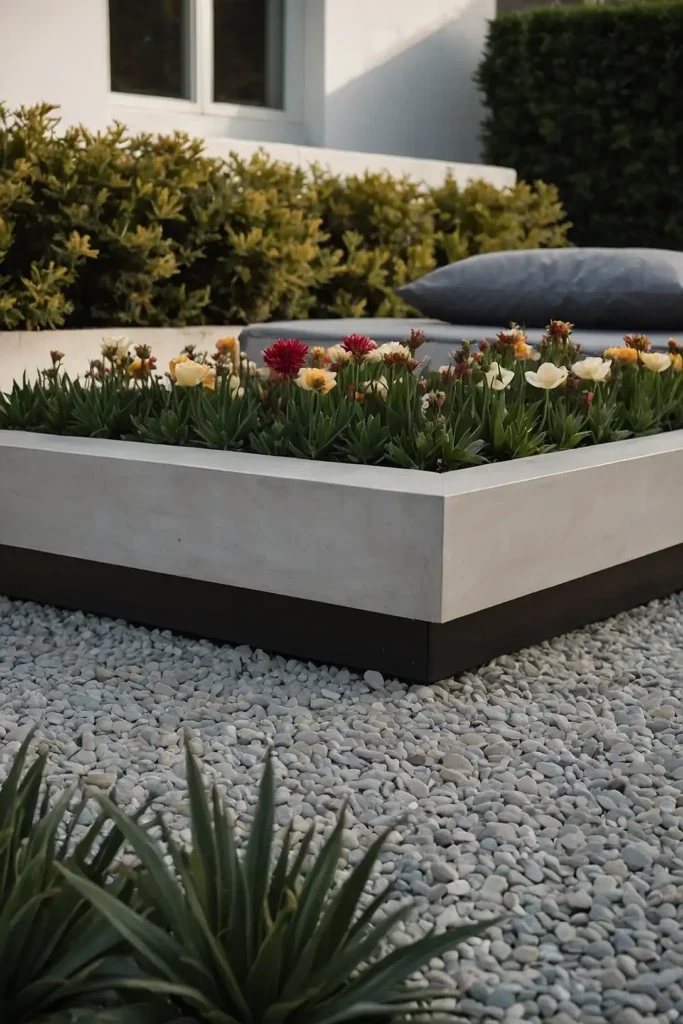
Design clean-lined beds using architectural plants and limited color palettes. You’ll achieve sophisticated looks with ornamental grasses, hostas, and geometric plantings.
Repeat plant groupings create rhythm and visual cohesion. Mulch or gravel surfaces provide sleek, contemporary finishing touches.
Choose plants with strong structural forms. This approach requires minimal maintenance while delivering maximum visual impact.
3: Seasonal Color Rotation
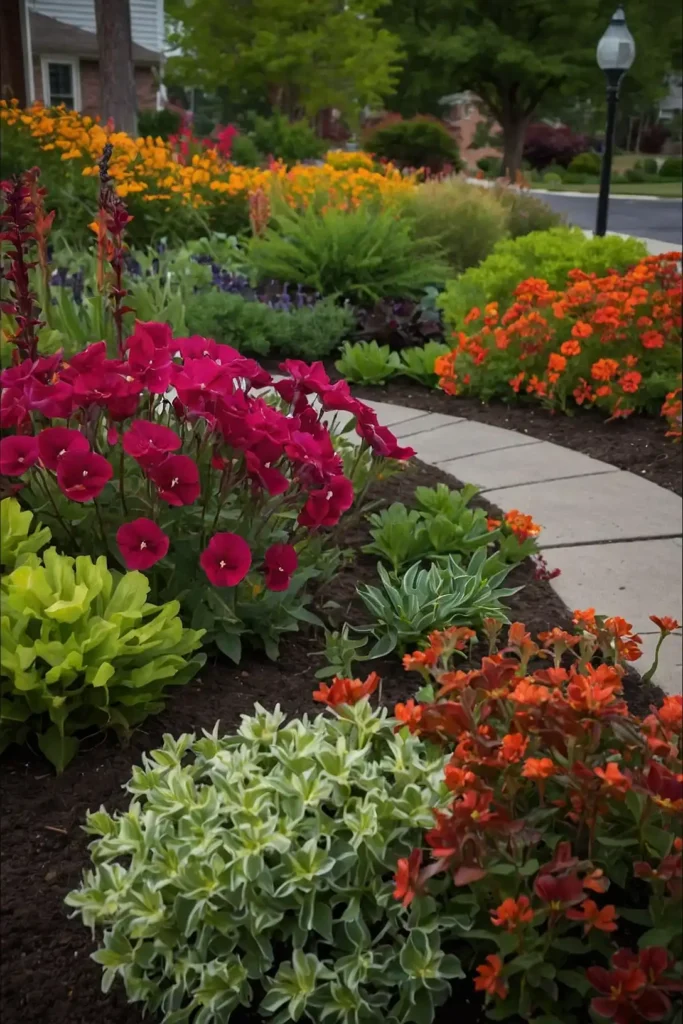
Plant different seasonal displays to ensure continuous blooms throughout the year. You can rotate annuals while maintaining permanent perennial backbone plantings.
Spring bulbs give way to summer annuals, then autumn mums. This system provides ever-changing front yard entertainment.
Plan color schemes that complement your home’s exterior. Proper timing ensures seamless transitions between seasonal displays.
4: Native Plant Sanctuaries
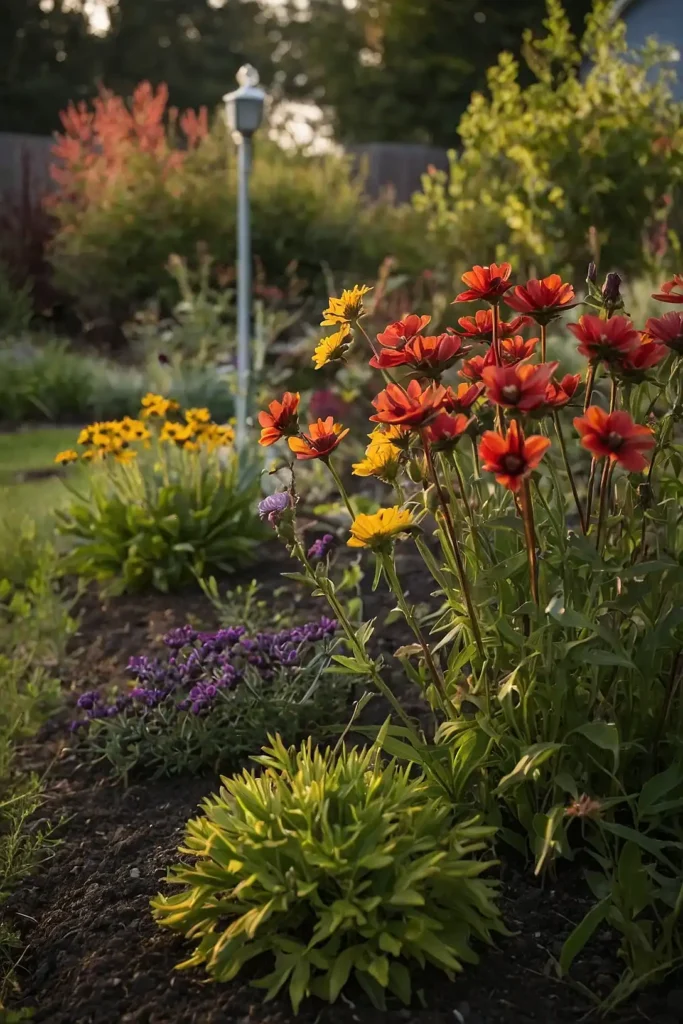
Choose indigenous plants that thrive naturally in your regional climate conditions. Research local native plant societies for region-specific recommendations.
You’ll support local wildlife while reducing water and maintenance requirements significantly.
Native plants attract beneficial insects and birds naturally. These eco-friendly gardens require fewer chemical inputs for healthy growth.
These sustainable choices often provide unique beauty unavailable from standard nursery plants.
5: Drought-Tolerant Designs
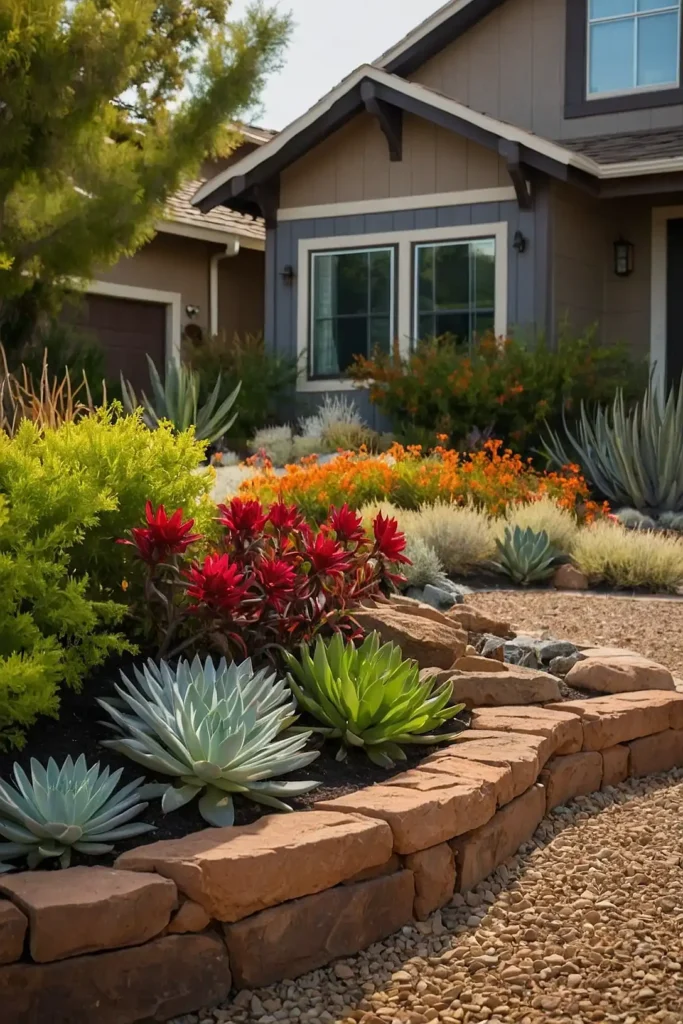
Select water-wise plants that survive dry conditions without supplemental irrigation. You’ll save time and money while creating resilient, beautiful front yard displays.
Succulents, lavender, and ornamental grasses excel in dry conditions. These plants often feature interesting textures and architectural forms.
Mulch heavily to retain soil moisture naturally. This approach works perfectly in arid climates or during water restrictions.
6: Shade Garden Retreats
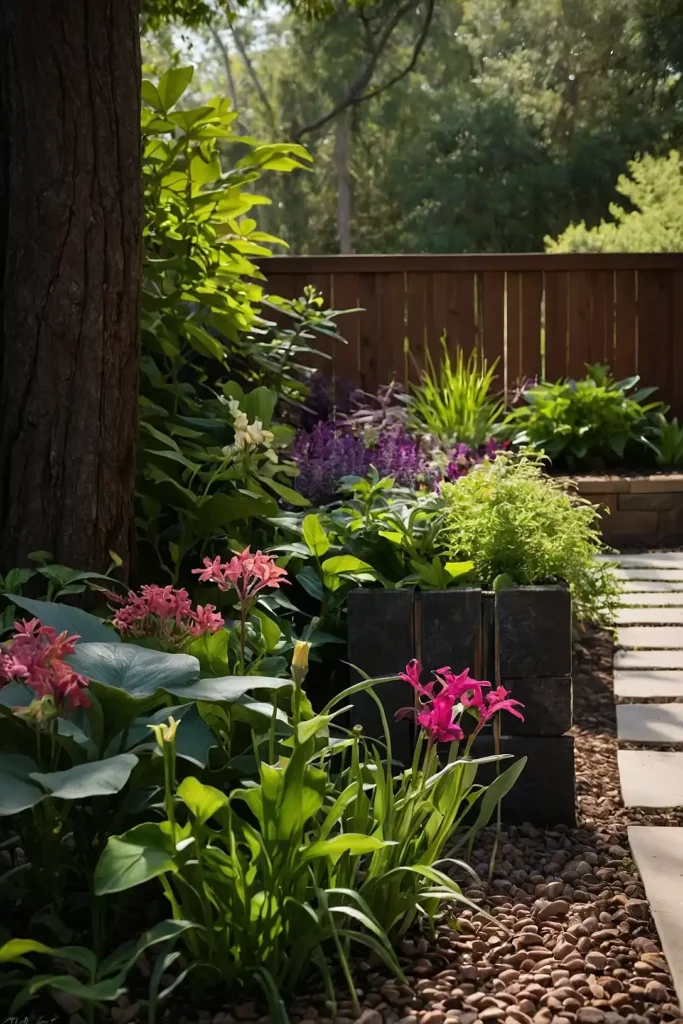
Transform challenging shady areas into lush, welcoming front entrance gardens. You can create stunning displays using shade-loving plants with varied foliage textures.
Hostas, ferns, and heuchera provide diverse leaf shapes and colors. These plants thrive where traditional sun plants struggle.
Include flowering shade plants like astilbe and caladiums. Proper plant selection turns problematic areas into garden assets.
7: Butterfly Haven Gardens
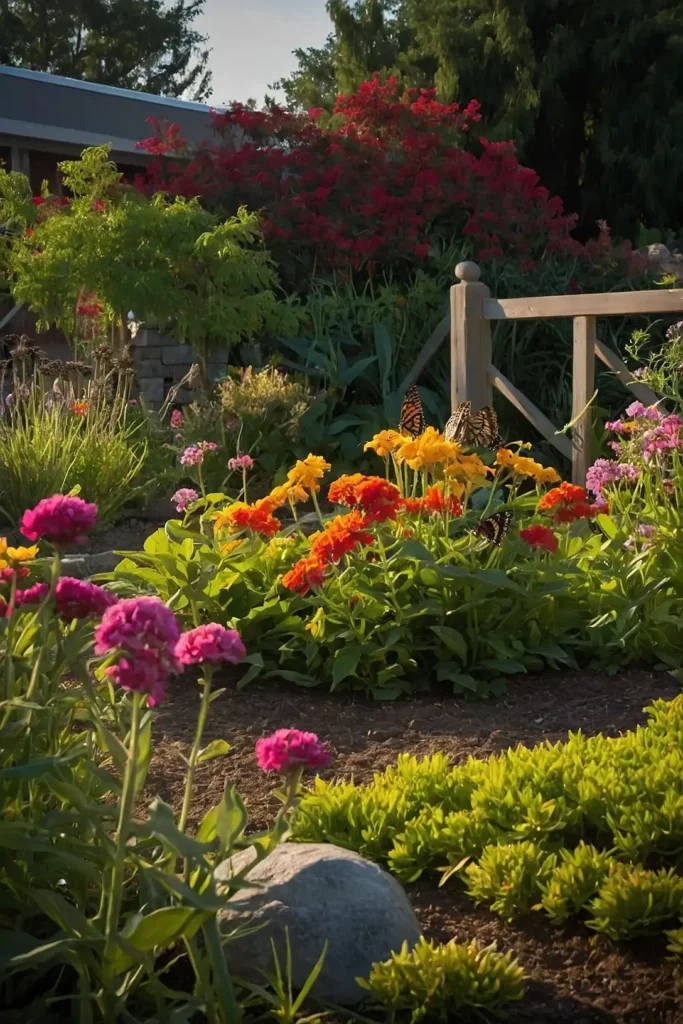
Plant nectar-rich flowers that attract butterflies while creating colorful front yard displays. You’ll enjoy watching these beautiful visitors while supporting important pollinators.
Include both adult nectar plants and larval host plants. This comprehensive approach supports complete butterfly life cycles.
Choose plants with different bloom times for season-long attraction. Butterfly bush, coneflowers, and zinnias create irresistible butterfly magnets.
8: Formal Geometric Beds
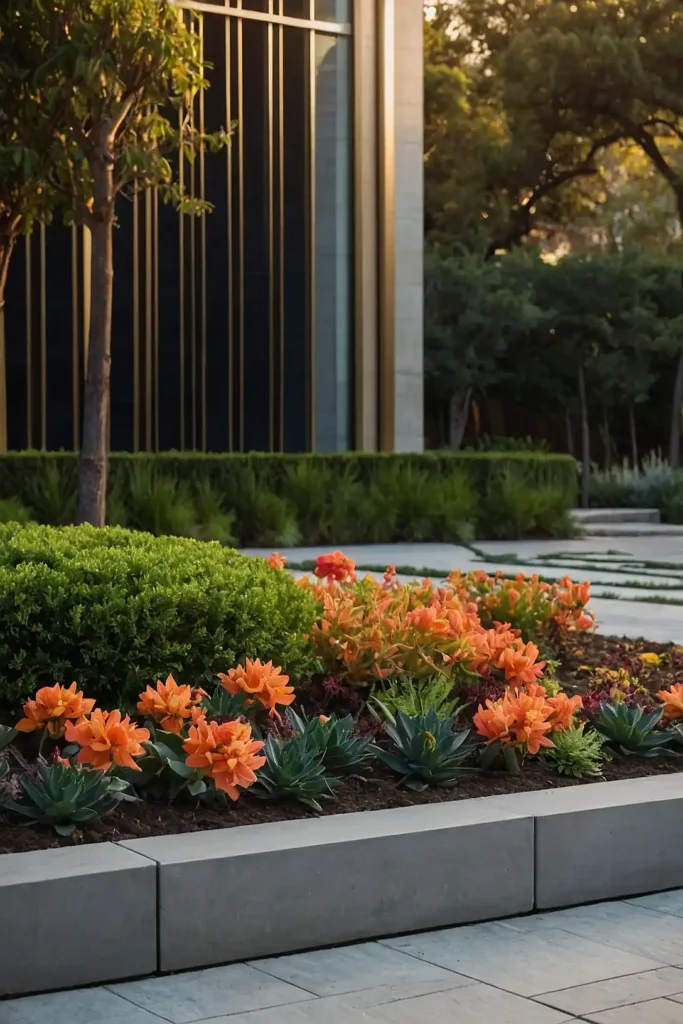
Create structured, symmetrical designs using precise plant placement and geometric shapes.
You’ll achieve elegant, timeless looks that complement traditional architecture perfectly.
Box hedging defines clean bed edges and internal patterns. This approach requires regular maintenance for crisp, formal appearances.
Include focal point plants like standard roses or topiary forms. These classical designs never go out of style.
9: Raised Flower Beds
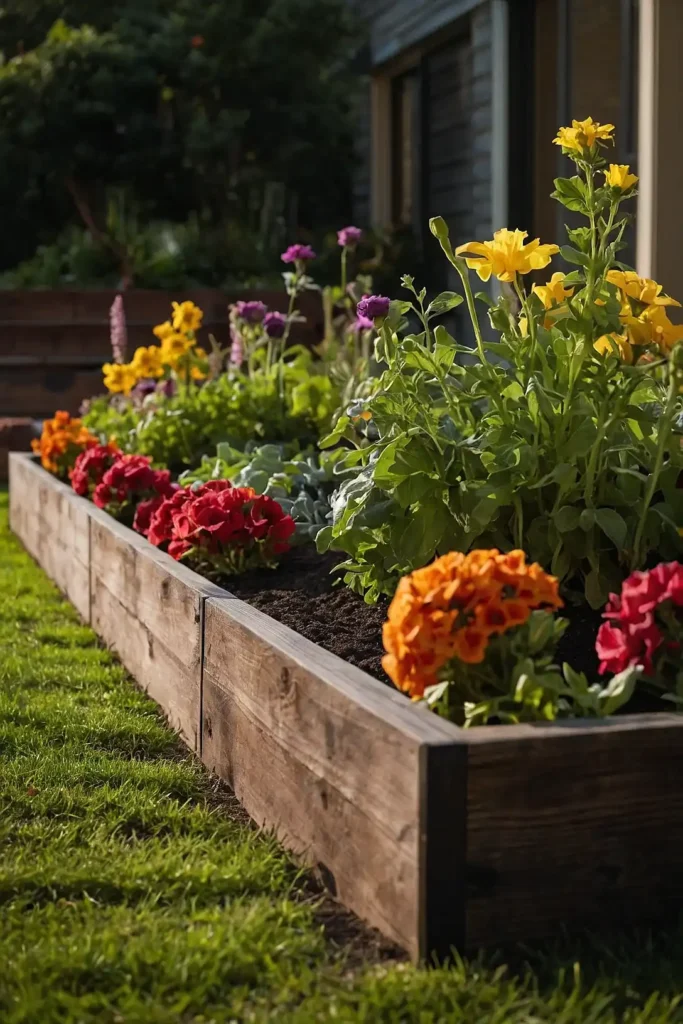
Build elevated planting areas that improve drainage while creating visual prominence. You’ll gain better soil control and easier maintenance access.
Use natural stone, brick, or timber for attractive retaining materials. Raised beds warm up faster in spring for earlier blooms.
Fill with quality soil mix for optimal plant performance. These beds work perfectly for homeowners with challenging soil conditions.
10: Corner Accent Gardens
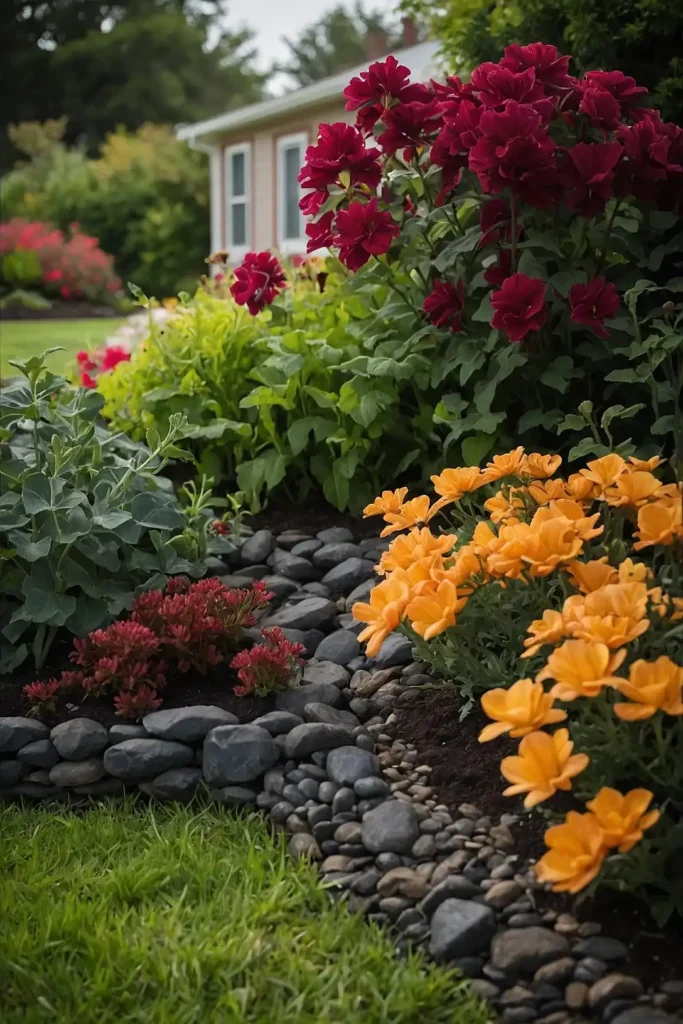
Transform awkward corner spaces into spectacular focal point gardens. You can create dramatic displays that anchor your home’s front landscape beautifully.
Use tall background plants with shorter foreground selections. This layered approach maximizes visual impact in compact spaces.
Include seasonal interest through varied bloom times and foliage colors. Corner beds often become the most photographed garden areas.
11: Foundation Planting Updates
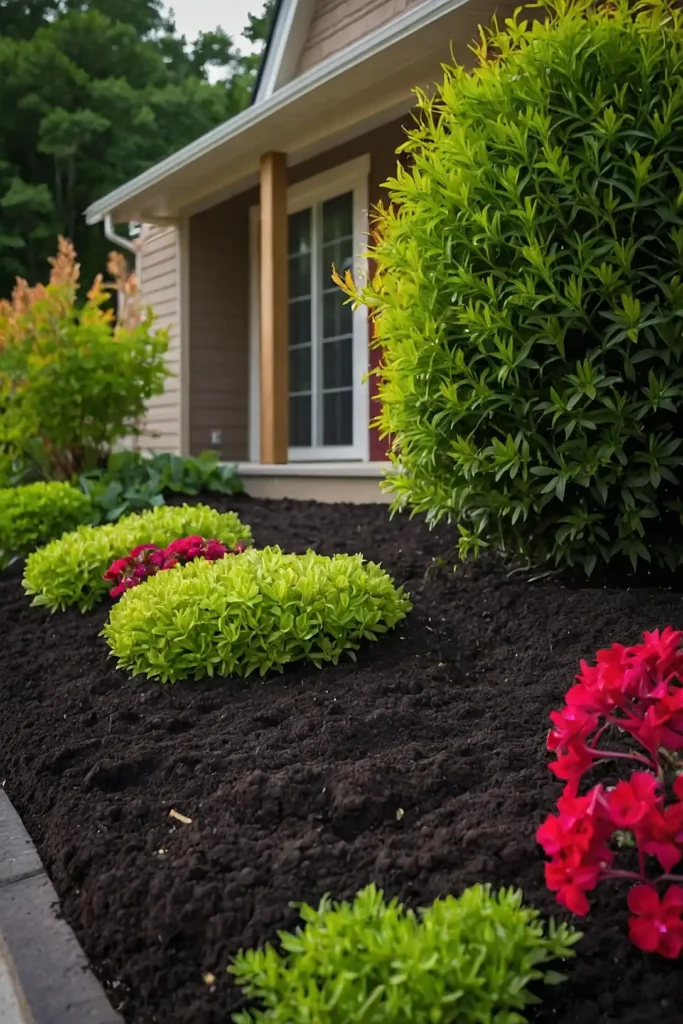
Refresh outdated foundation plantings with colorful flowering additions. You’ll soften hard architectural lines while maintaining necessary screening functions.
Layer flowers in front of existing shrubs for instant transformation. This approach preserves mature plantings while adding seasonal color.
Choose plants that complement existing foundation shrub heights and forms. Gradual updates prove more budget-friendly than complete replacements.
12: Mixed Border Gardens
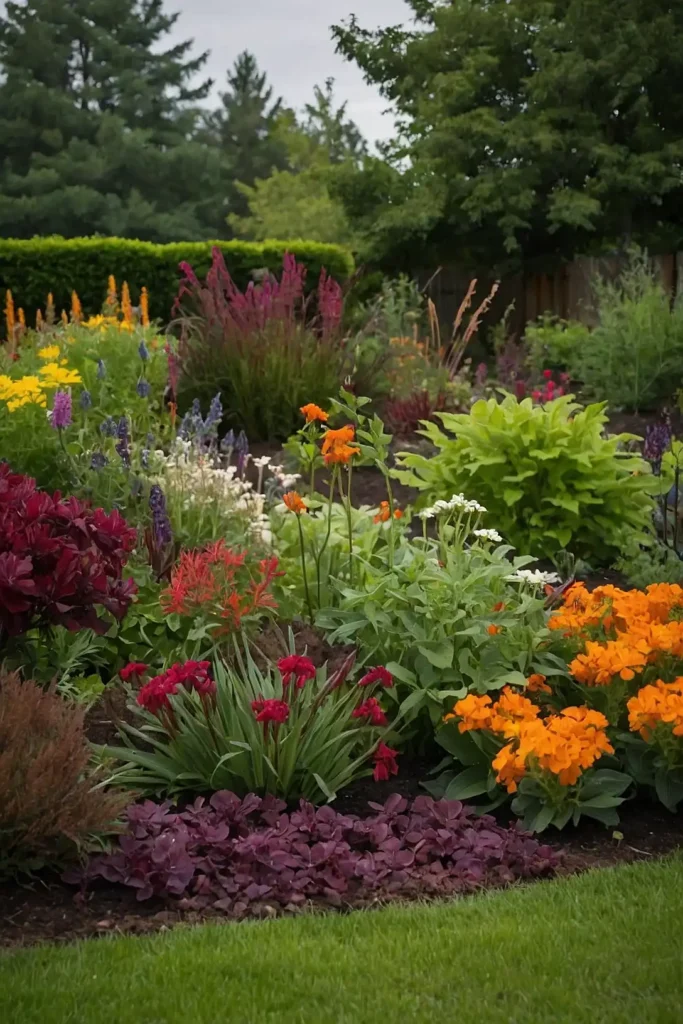
Combine perennials, annuals, and shrubs for dynamic, ever-changing garden displays. You’ll achieve professional landscape design results through careful plant selection.
Plan for succession blooming throughout the growing season. This approach ensures continuous color and interest.
Include plants with different textures, heights, and bloom times. Mixed borders provide the most gardening enjoyment per square foot.
13: Monochromatic Color Schemes
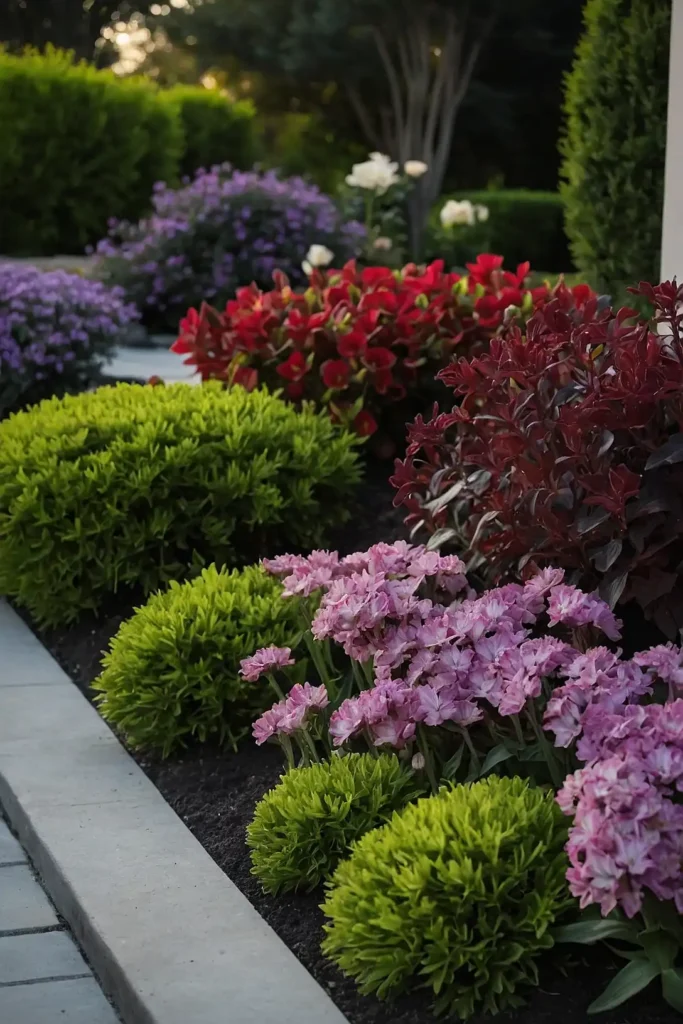
Design beds using single color families for sophisticated, cohesive appearances. You can create dramatic impact through thoughtful color repetition and plant selection.
White gardens appear luminous and elegant during evening hours. Blue or yellow schemes create cheerful, welcoming front entrance displays.
Include plants with varied textures within your chosen color range. This approach prevents monotony while maintaining color discipline.
14: Layered Height Designs
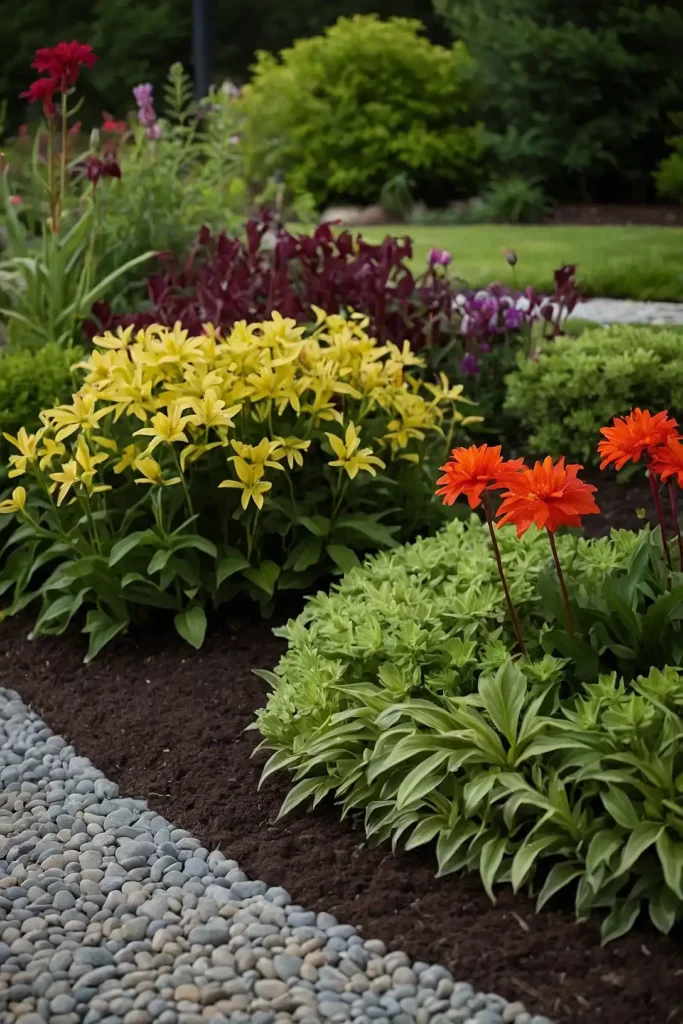
Arrange plants by height to create depth and visual interest. You’ll achieve professional landscape design principles through proper plant placement.
Place tall plants in back, medium heights in middle, short plants in front. This basic rule creates pleasing proportions and visibility.
Include some breakthrough plants that break height rules for natural appearances. Rigid height arrangements can appear too artificial.
15: Fragrant Flower Gardens
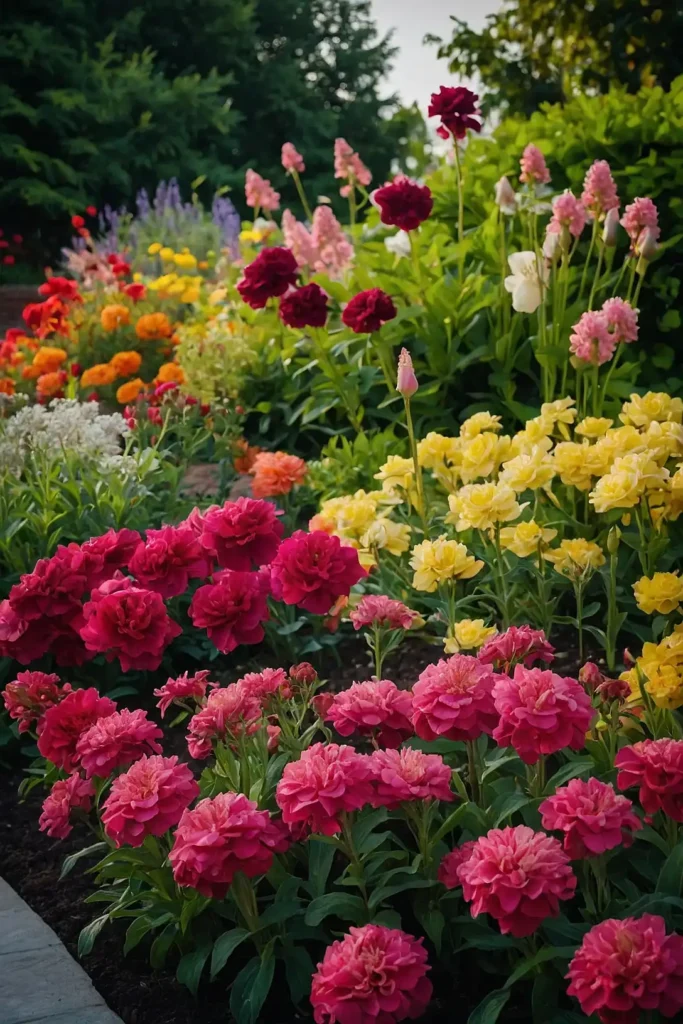
Choose aromatic plants that welcome visitors with delightful scents. You’ll create multisensory garden experiences that engage beyond visual beauty alone.
Position fragrant plants near walkways and entrance areas. Evening-scented plants like four o’clocks provide magical after-dark experiences.
Include herbs like lavender and rosemary for year-round fragrance. These plants offer both beauty and practical uses.
16: Wildflower Meadow Strips
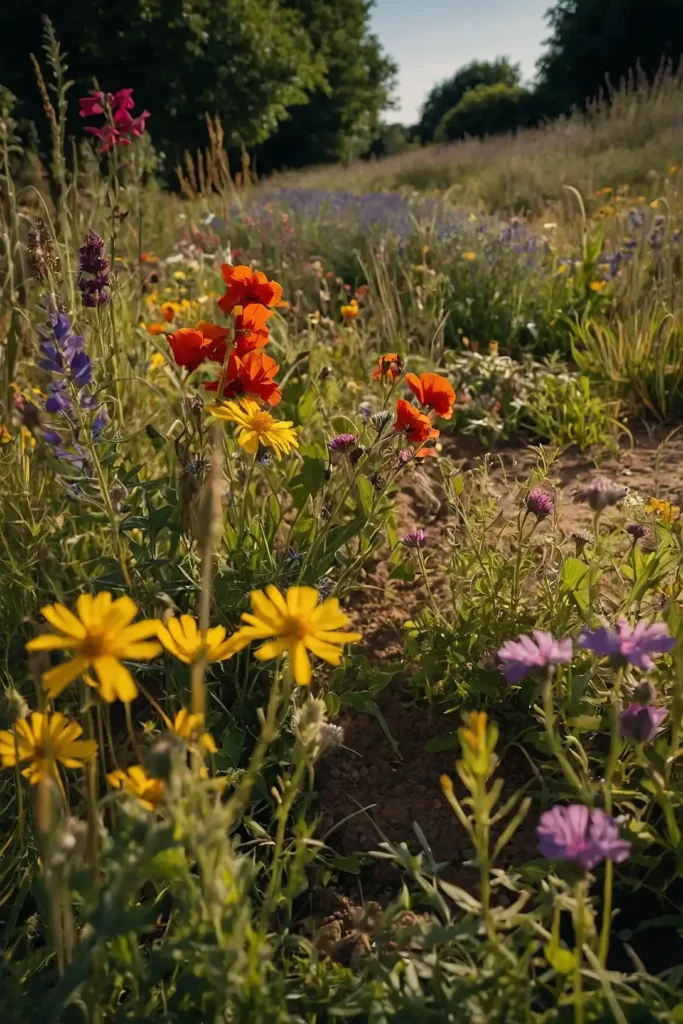
Create naturalistic plantings using native wildflower mixes. You’ll achieve effortless beauty while supporting local ecosystems and reducing maintenance requirements.
Prepare soil properly for successful wildflower establishment. These gardens look natural but require careful initial planning.
Allow some areas to self-seed for authentic meadow appearances. This approach works perfectly for larger front yard areas.
17: Rock Garden Displays
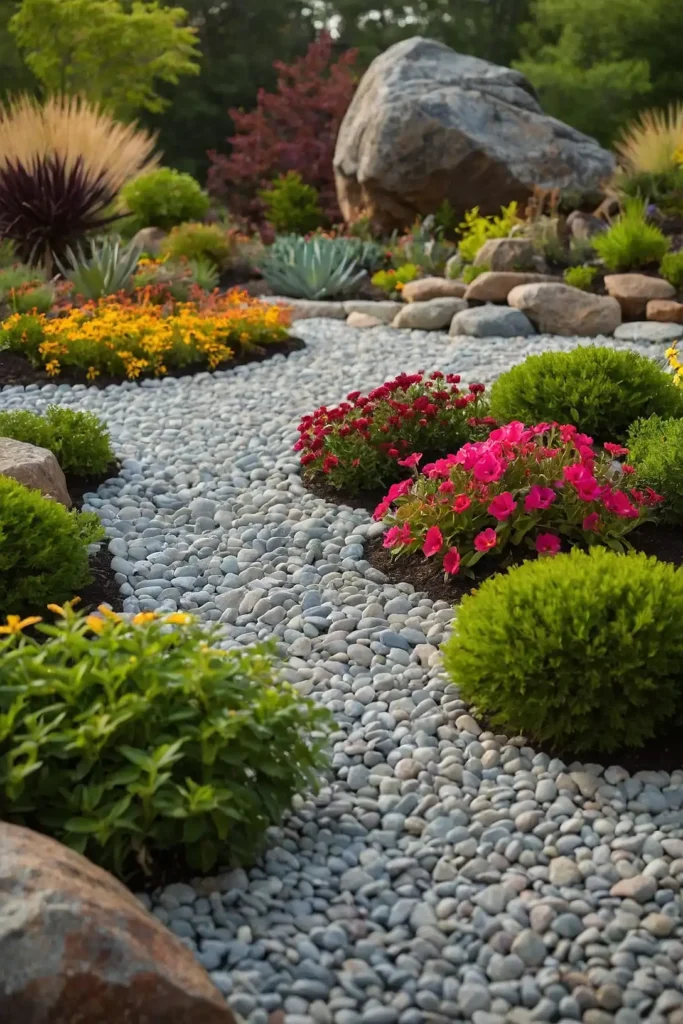
Incorporate stones and alpine plants for unique textural interest. You can create striking displays that require minimal water and maintenance.
Choose plants that naturally grow in rocky conditions. Sedums, alpine pinks, and rock cress thrive in these environments.
Use local stone materials for authentic, regional character. Proper drainage ensures success with rock garden plants.
18: Perennial Border Classics
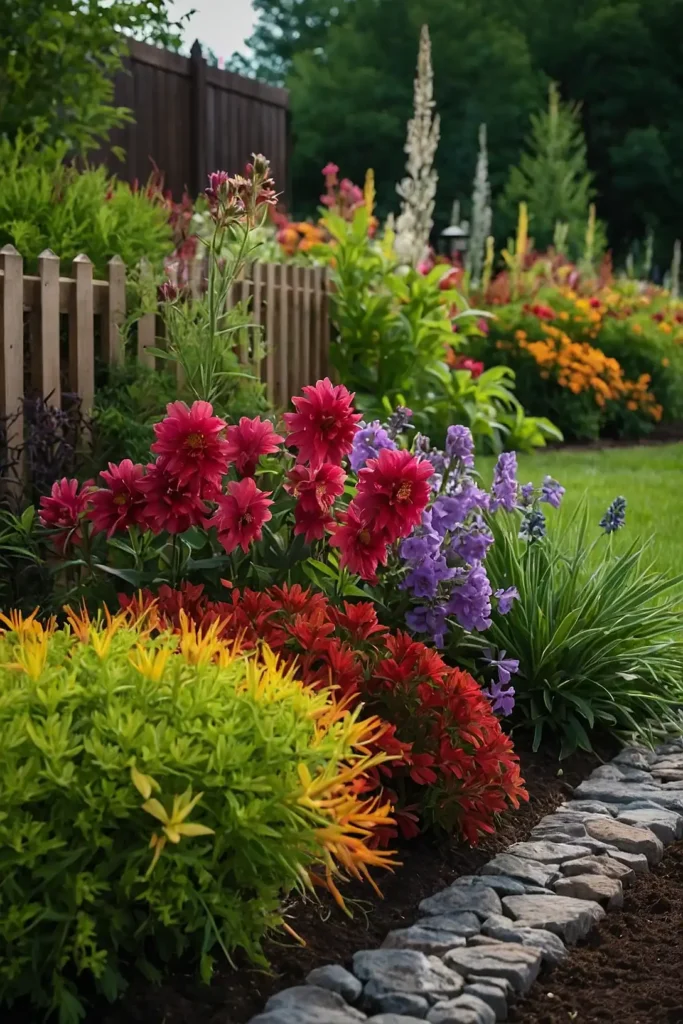
Plant traditional perennial borders that return reliably each growing season. You’ll build lasting garden value through carefully chosen long-lived plants.
Include spring, summer, and fall blooming varieties for extended seasons. This approach provides excellent return on gardening investment.
Choose plants suited to your specific growing conditions. Proper plant selection ensures decades of reliable garden performance.
19: Annual Display Gardens
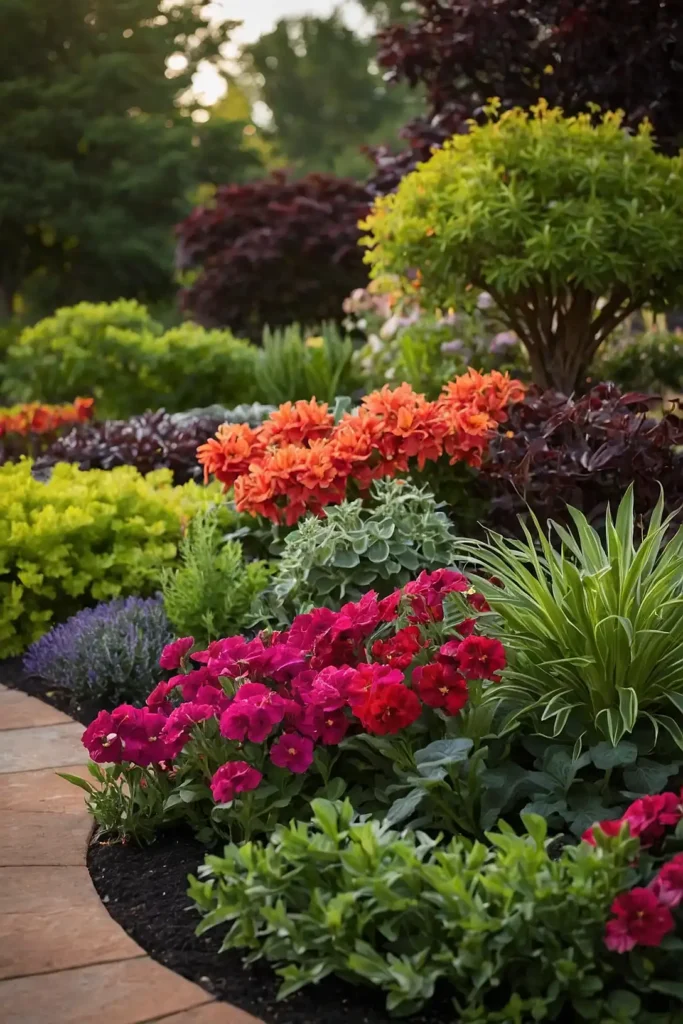
Create brilliant seasonal displays using colorful annual flowers. You can experiment with different combinations each year without long-term commitments.
Annuals provide constant bloom throughout their growing season. These plants offer immediate gratification and maximum color impact.
Change color schemes annually for renewed garden excitement. This flexible approach suits gardeners who enjoy frequent design changes.
20: Succulent Showcase Beds
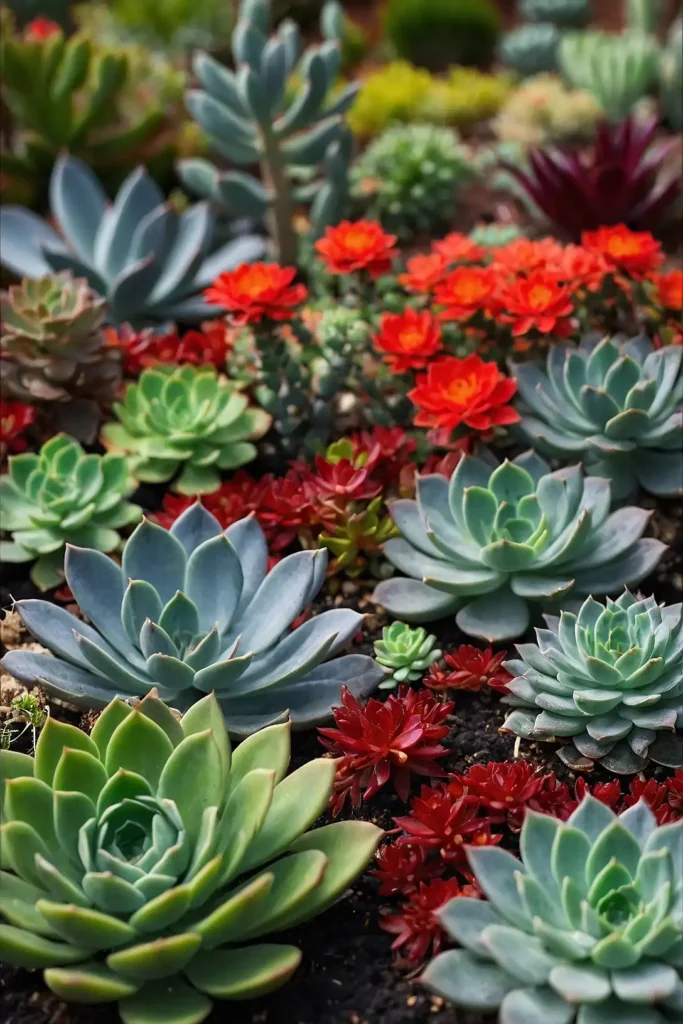
Design water-wise gardens featuring diverse succulent plants and forms. You’ll create striking architectural displays that require minimal maintenance once established.
Choose cold-hardy varieties for year-round outdoor survival. These plants offer incredible diversity in shapes, sizes, and colors.
Include decorative gravel or sand for authentic desert garden aesthetics. Succulent gardens work perfectly in contemporary landscape designs.
21: Herb and Flower Combinations
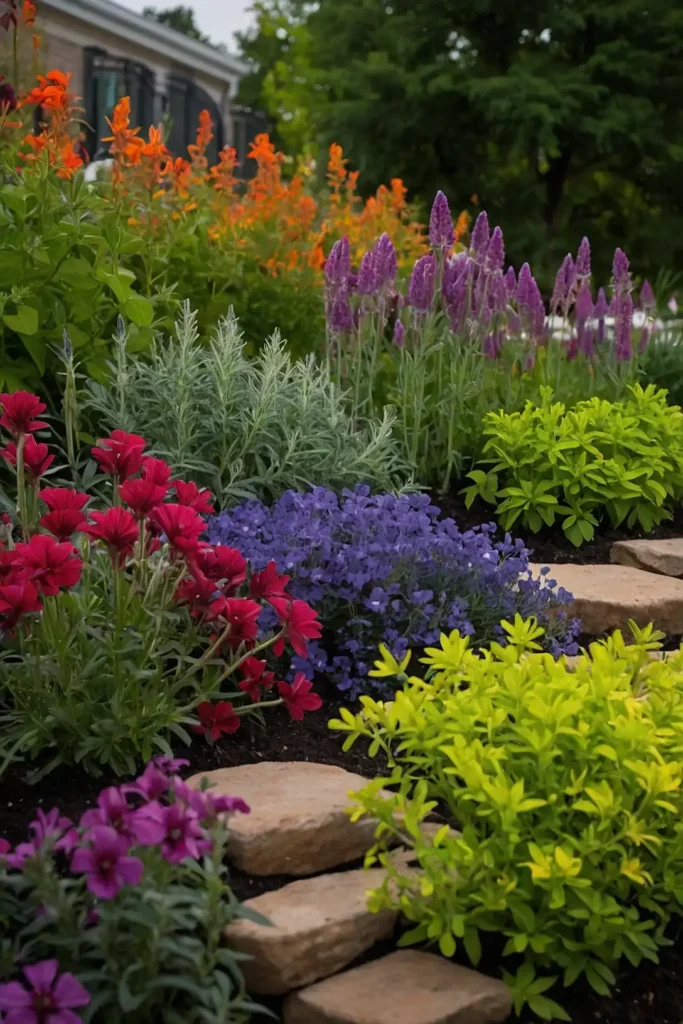
Mix culinary herbs with ornamental flowers for beautiful, functional front yard gardens. You’ll enjoy fresh herbs while creating attractive landscape displays.
Many herbs produce beautiful flowers that attract beneficial insects. Rosemary, lavender, and sage offer both culinary and ornamental value.
Position near kitchen access for convenient harvesting. These practical gardens provide beauty and utility in single plantings.
22: Seasonal Bulb Displays
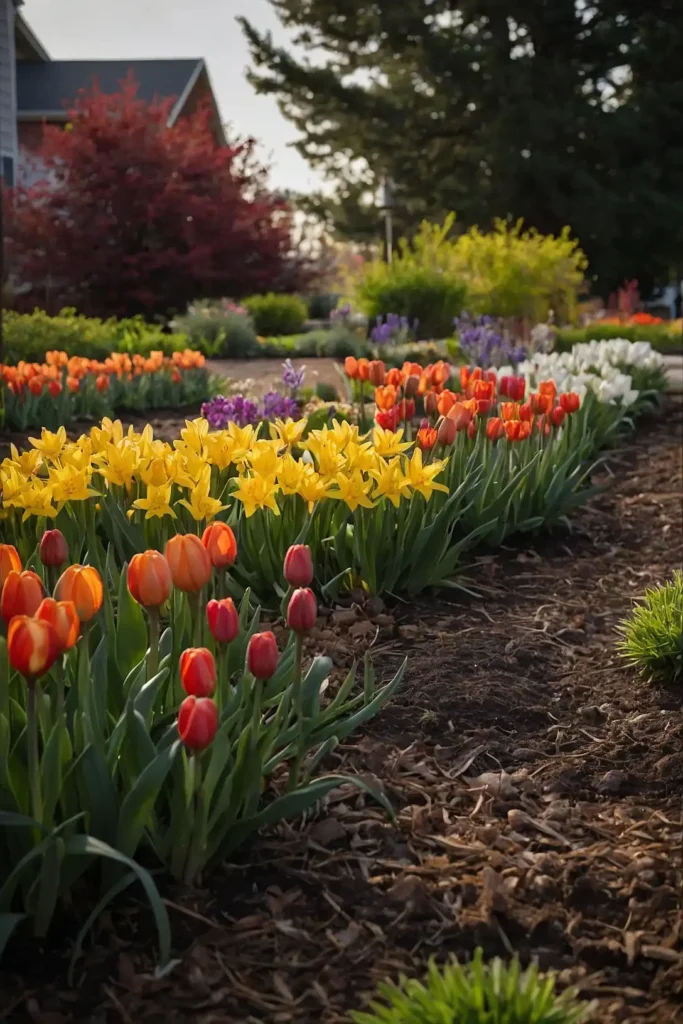
Plan successive bulb plantings for spring through fall blooming sequences. You can achieve months of colorful displays through proper bulb selection and timing.
Layer bulbs at different depths for naturalistic appearances. This technique maximizes bloom impact in limited space areas.
Include summer and fall blooming bulbs beyond traditional spring varieties. Extended bulb seasons provide exceptional garden value.
23: Tropical Style Gardens
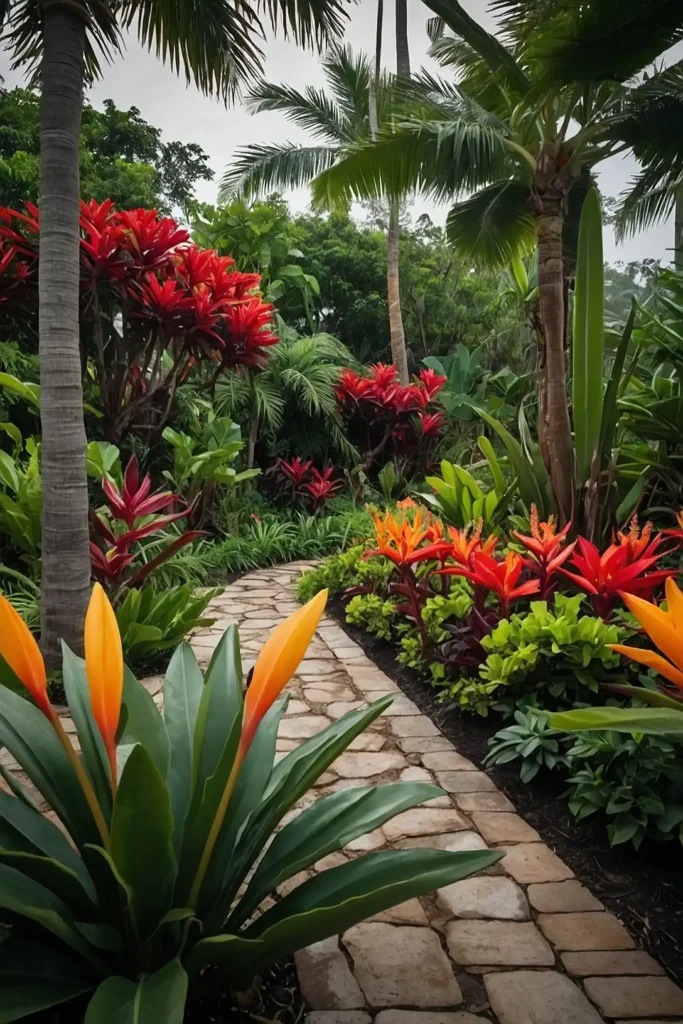
Create exotic, lush displays using tropical and tropical-looking plants. You’ll achieve vacation resort atmospheres right in your front yard landscape.
Include large-leafed plants like elephant ears and bananas. These dramatic foliage plants create instant tropical character.
Add bright flowering plants like hibiscus and bougainvillea. This approach works in tropical climates or as seasonal displays.
24: Prairie Style Gardens
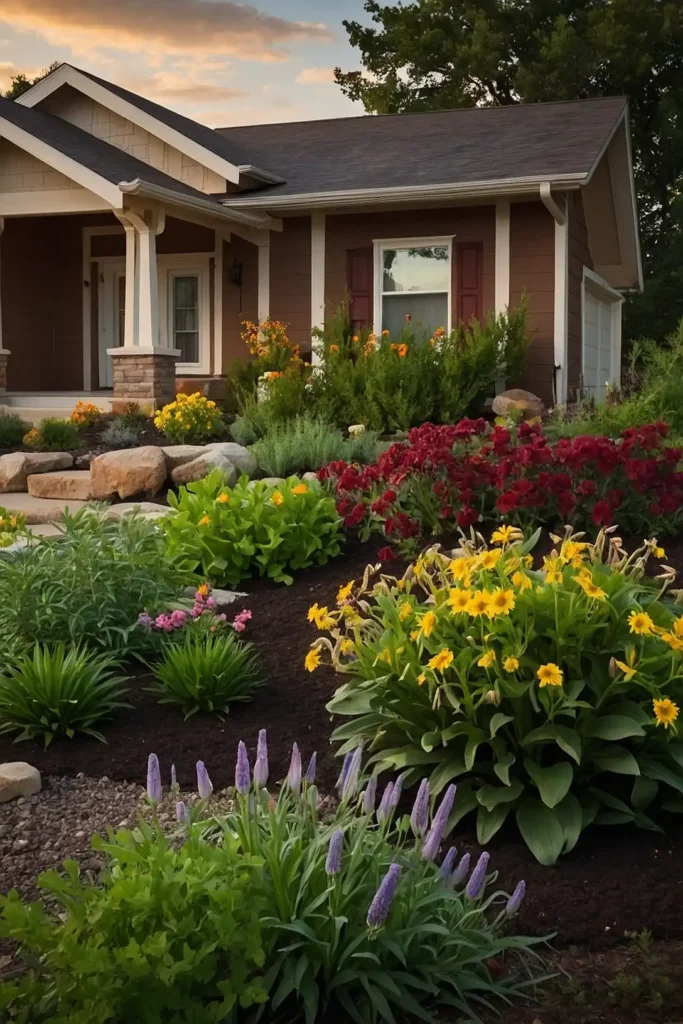
Design naturalistic plantings inspired by native grassland ecosystems. You’ll create low-maintenance gardens that support wildlife while providing unique beauty.
Include native grasses and wildflowers in natural-looking arrangements. These gardens require minimal inputs once properly established.
Allow plants to go to seed for winter interest. Prairie gardens provide four-season beauty through natural plant cycles.
25: Mediterranean Gardens
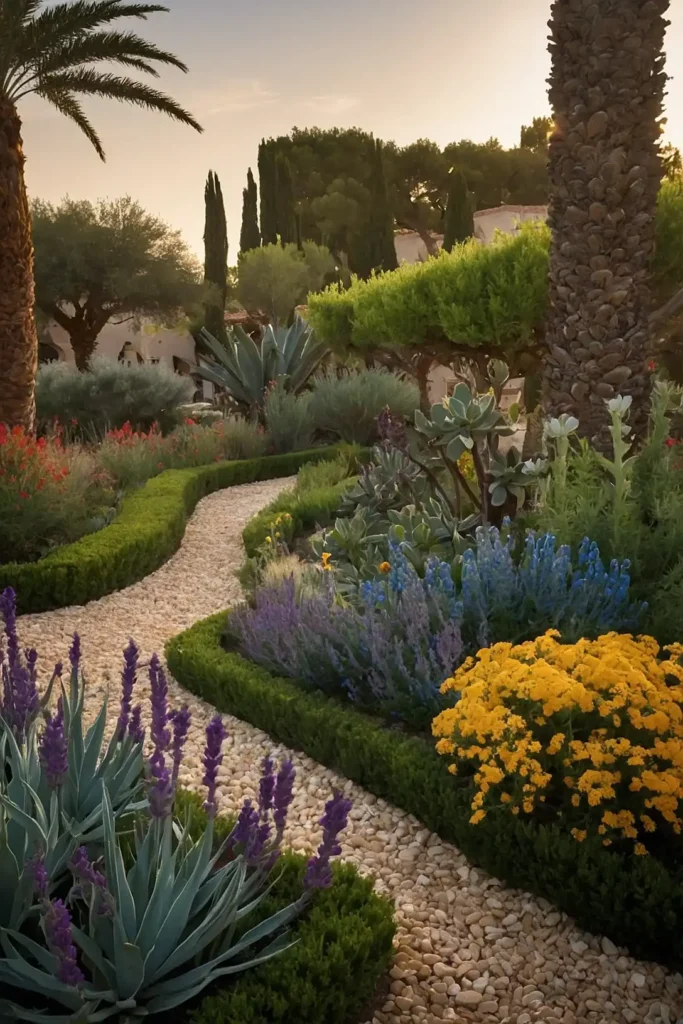
Create sun-loving gardens featuring plants from Mediterranean climates. You’ll achieve sophisticated, drought-tolerant displays with distinctive character.
Include lavender, rosemary, and olive trees for authentic Mediterranean atmosphere. These plants thrive in hot, dry conditions.
Use gravel paths and terra cotta containers for regional authenticity. This style works perfectly in similar climate zones.
26: Japanese-Inspired Beds
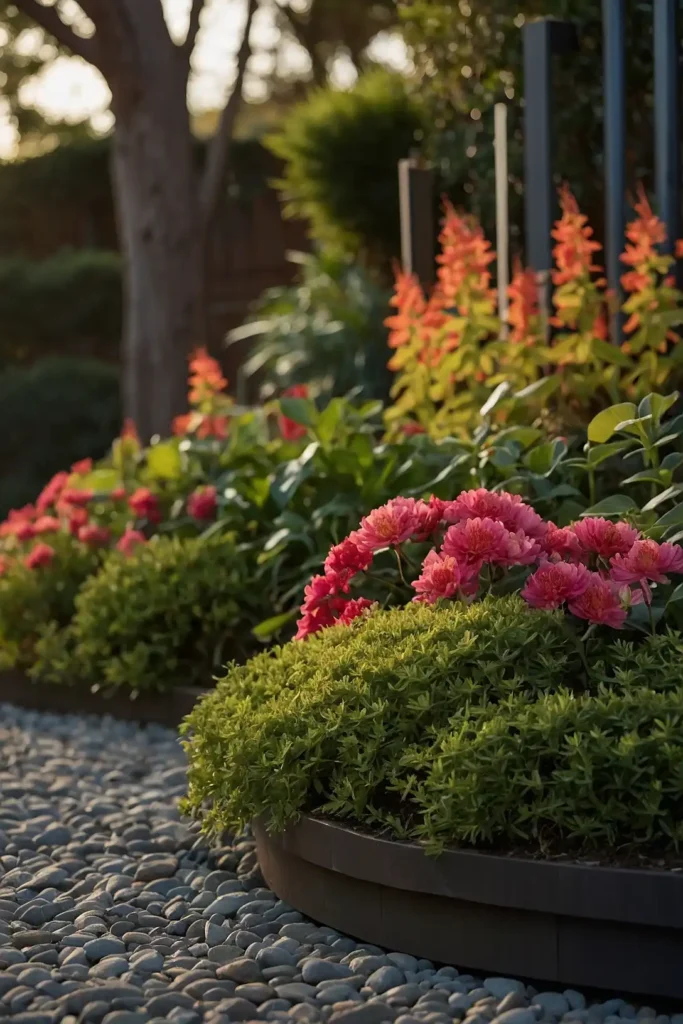
Design serene, minimalist gardens using Japanese aesthetic principles. You can create peaceful, contemplative spaces that complement contemporary home architecture.
Include carefully chosen plants with seasonal interest and architectural forms. Simple plant palettes create sophisticated, uncluttered appearances.
Add decorative stones or small water features for authentic touches. These gardens emphasize quality over quantity in plant selection.
27: Cutting Garden Beds
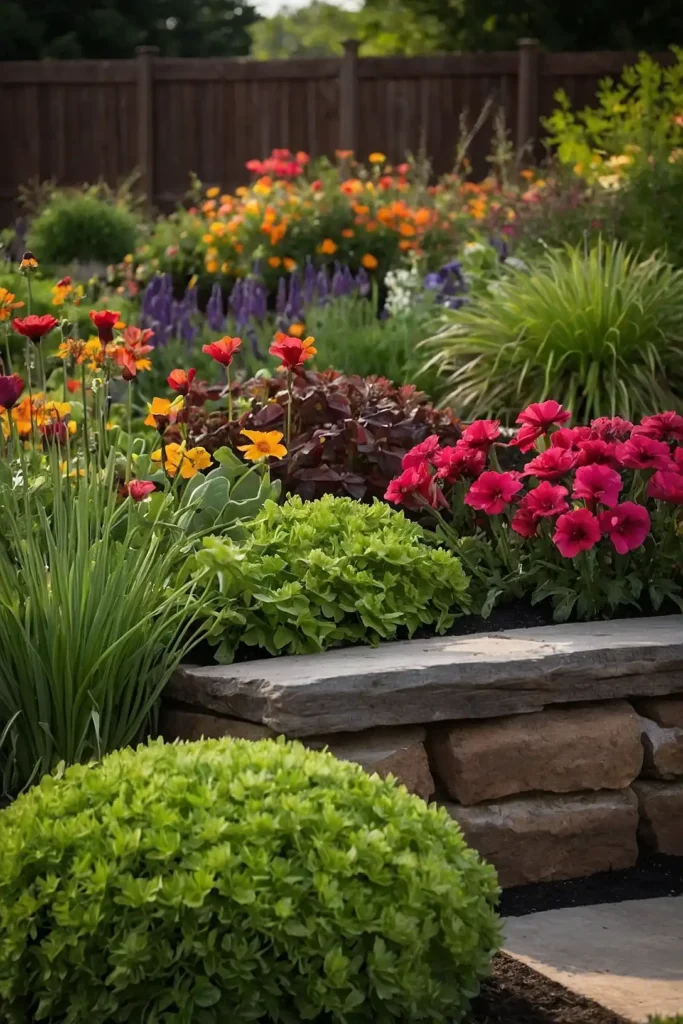
Plant flowers specifically for indoor arrangements and bouquets. You’ll enjoy fresh flowers throughout the growing season while creating beautiful front yard displays.
Choose varieties with long stems and good vase life. Cosmos, zinnias, and sunflowers excel as cutting garden plants.
Include foliage plants for bouquet greenery needs. This practical approach combines beauty with functional flower production.
Conclusion
Transform your front yard with these inspiring flower bed ideas that enhance curb appeal and reflect your personal gardening style preferences.

